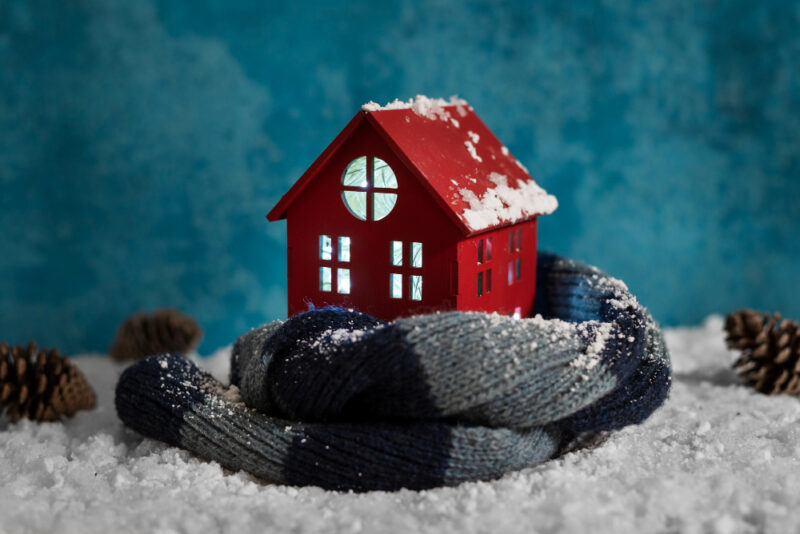As winter approaches and temperatures begin to drop, homeowners turn their attention to keeping their homes warm and cozy. One essential aspect of winter preparation is roof insulation. A well-insulated roof can significantly improve energy efficiency and comfort during the cold months. In this article, we’ll explore the steps to insulate a roof for winter, providing guidance to homeowners looking to enhance their homes’ insulation. And for those seeking professional assistance, we’ll also touch on the role of skilled roofers.
1. Assess Your Roof’s Insulation Needs
Before diving into the insulation process, it’s crucial to assess your roof’s current insulation and identify areas that may require improvement. Insulation effectiveness can diminish over time due to wear and tear or settling. Inspect your attic or roof space to determine the type and condition of existing insulation. Look for signs of gaps, damage, or areas with insufficient coverage.
2. Choose the Right Insulation Material
Selecting the appropriate insulation material is a crucial decision. Common options include fiberglass batts, cellulose, spray foam, and rigid foam boards. Each has its advantages and considerations. Fiberglass batts, for instance, are cost-effective and relatively easy to install, while spray foam offers exceptional air-sealing properties.
The choice may also depend on factors such as your budget, local climate, and whether you plan to do the installation yourself or hire professionals. Consult with a knowledgeable roofer or insulation expert to determine the best insulation material for your specific needs.
3. Prioritize Attic Insulation
In many homes, the attic is a prime area for heat loss during the winter. To maximize energy efficiency, prioritize insulating the attic space. Start by sealing any gaps, cracks, or holes in the attic’s walls and roof. This prevents warm air from escaping and cold air from infiltrating.
Next, add insulation to the attic floor or between the roof rafters, depending on your attic’s design. Ensure that the insulation material is installed evenly and covers the entire attic space. Properly insulating the attic can have a significant impact on your home’s comfort and heating costs.
4. Address Ventilation
While insulating your roof, it’s essential to address ventilation to prevent moisture buildup. Inadequate ventilation can lead to condensation issues, which can compromise the insulation and roof structure. Install proper vents and ensure that air can circulate effectively within the attic or roof space. Consult with a roofing professional or insulation expert to determine the optimal ventilation system for your roof.
5. Seek Professional Roofers for Complex Projects
Insulating a roof can be a complex task, particularly for homes with unique architectural features or challenging roof designs. In such cases, enlisting the expertise of skilled roofers is a wise choice. Professional roofers have the knowledge and experience to assess your roof’s specific insulation needs and recommend the most suitable materials and techniques.
Additionally, roofers can ensure that the insulation installation is carried out correctly and complies with local building codes. They can address any potential issues, such as roof leaks or structural concerns, before proceeding with insulation. Hiring roofers for your project provides peace of mind and ensures that your roof insulation is of the highest quality.
6. Consider the Long-Term Benefits
Investing in roof insulation is not only about immediate comfort but also long-term benefits. A well-insulated roof can lead to substantial energy savings over time. Reduced heating costs, improved indoor comfort, and a smaller carbon footprint are some of the advantages.
Moreover, proper insulation can extend the lifespan of your roof by minimizing temperature fluctuations and reducing the risk of ice dams in colder climates. It also contributes to a more consistent indoor temperature, reducing wear and tear on your heating system.
7. Regular Maintenance
After insulating your roof, it’s essential to perform regular maintenance to ensure its continued effectiveness. Inspect the insulation for any signs of damage, settling, or moisture issues. Address any concerns promptly to maintain your roof’s insulation integrity.
In conclusion, insulating your roof for winter is a crucial step in creating a warm and energy-efficient home. Assess your insulation needs, choose the right materials, and prioritize attic insulation. Consider professional roofers for complex projects and ventilation solutions to maintain a healthy roof environment. By investing in roof insulation, you can enjoy long-term benefits in terms of energy savings, comfort, and the overall well-being of your home.
As you embark on this insulation journey, remember that you’re taking steps to create a more comfortable and sustainable living space for yourself and your loved ones. Whether you choose to DIY or enlist the expertise of professional roofers, a well-insulated roof is a valuable asset that enhances the quality of your home life, especially during the winter months.










